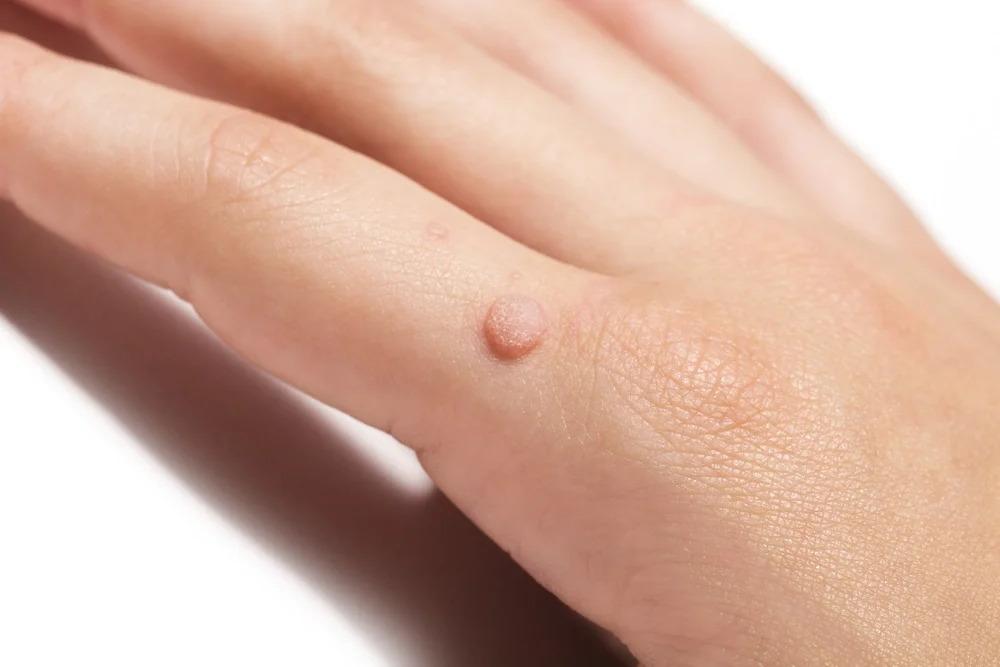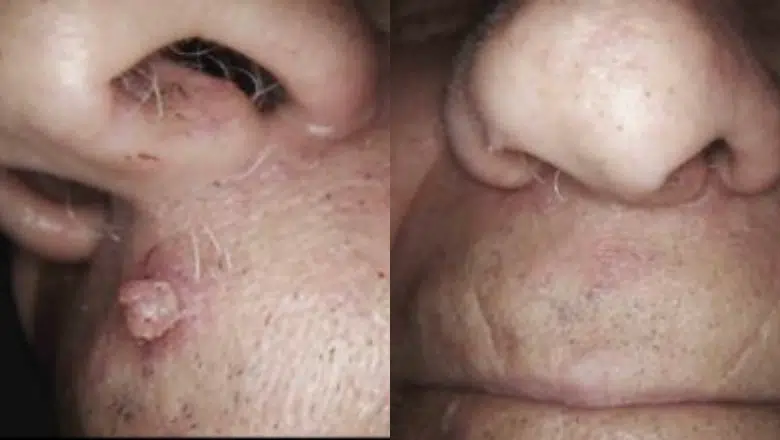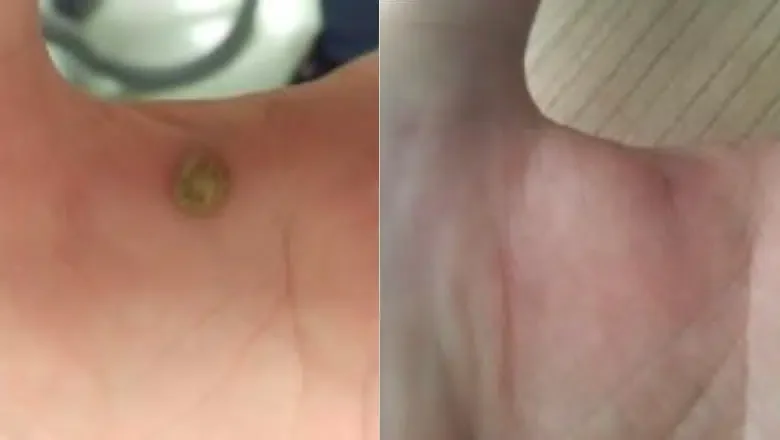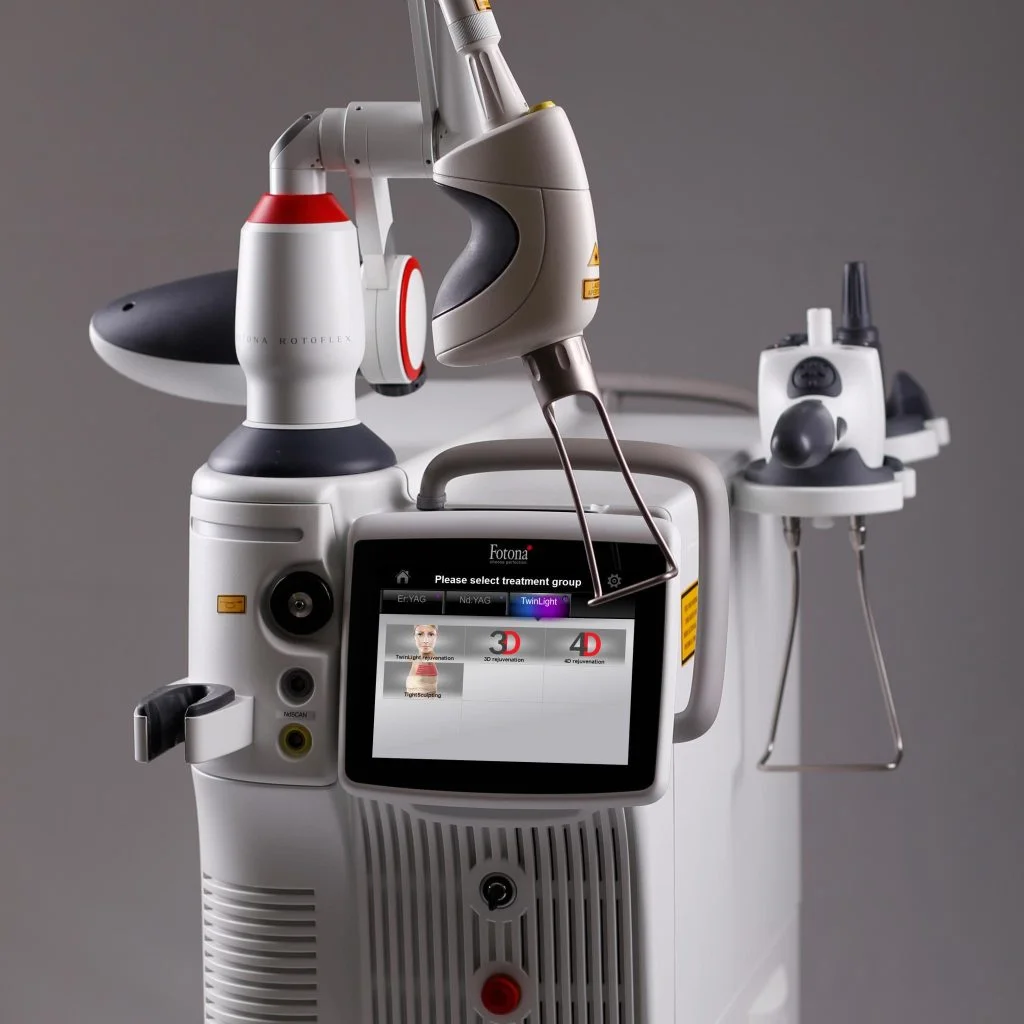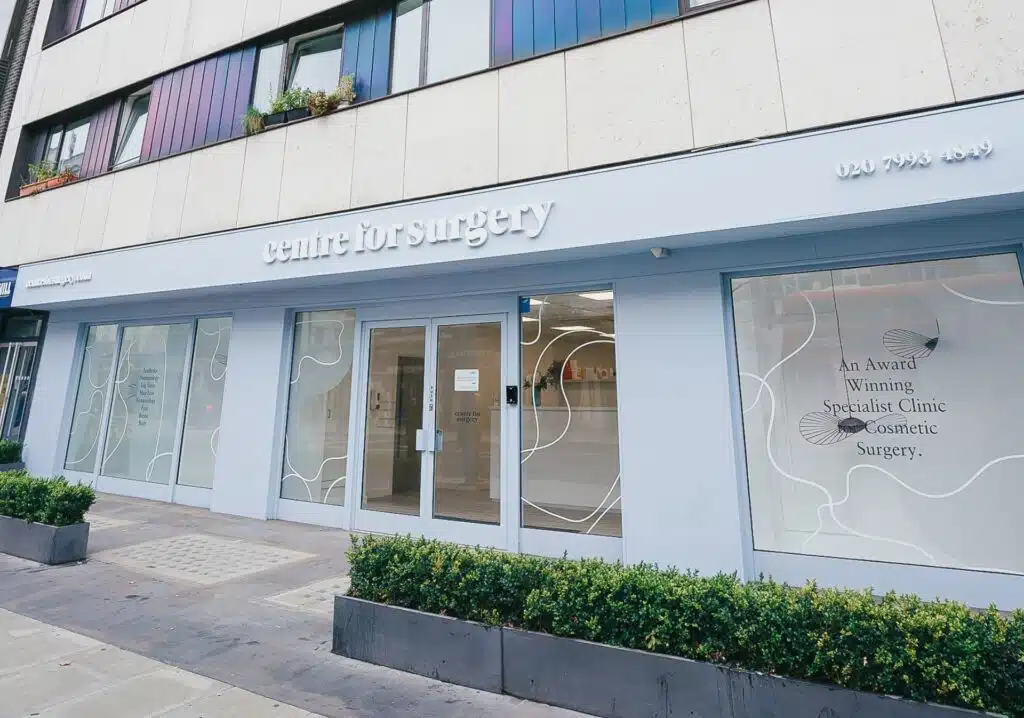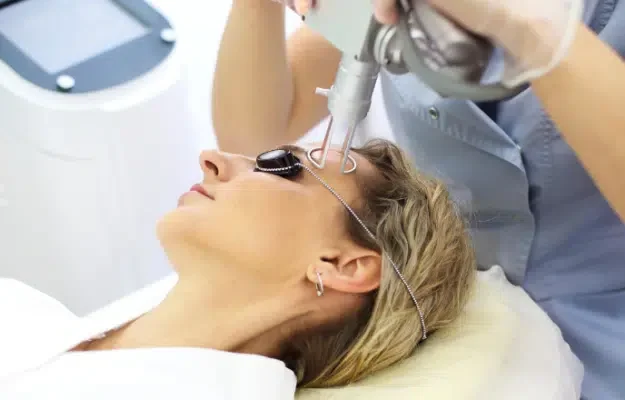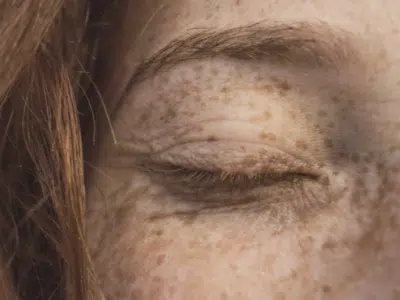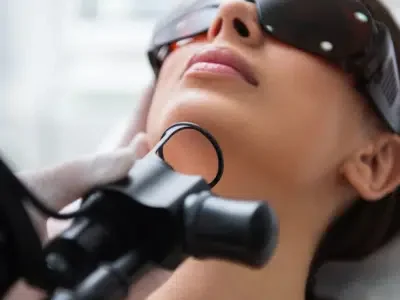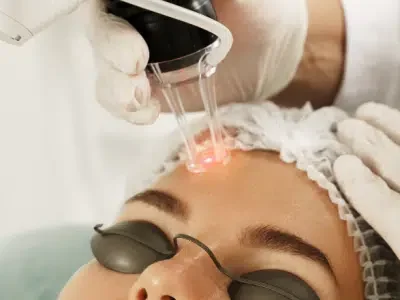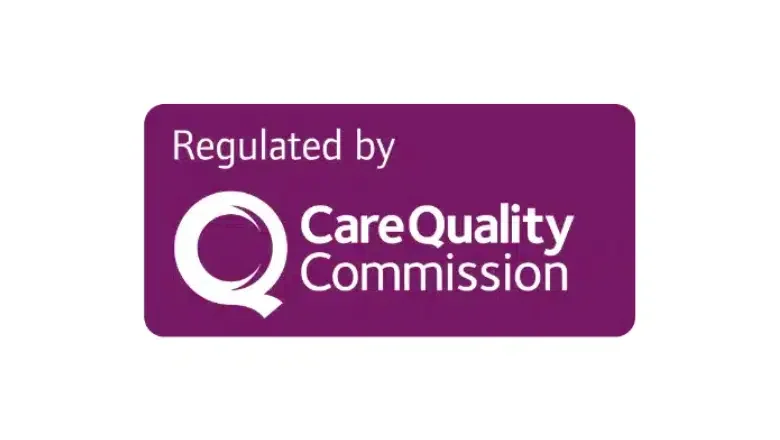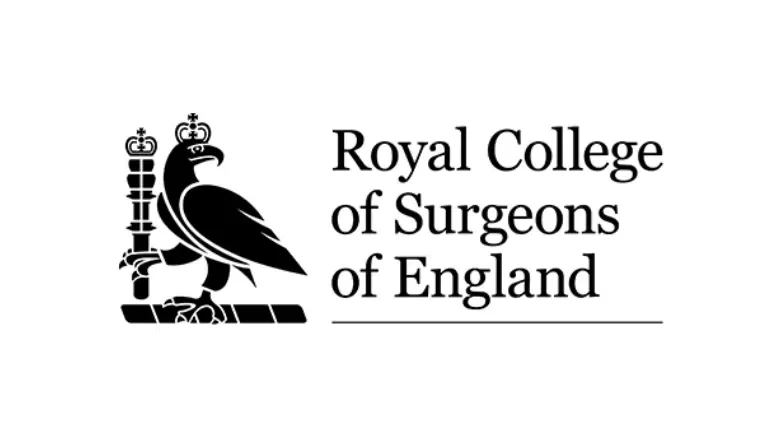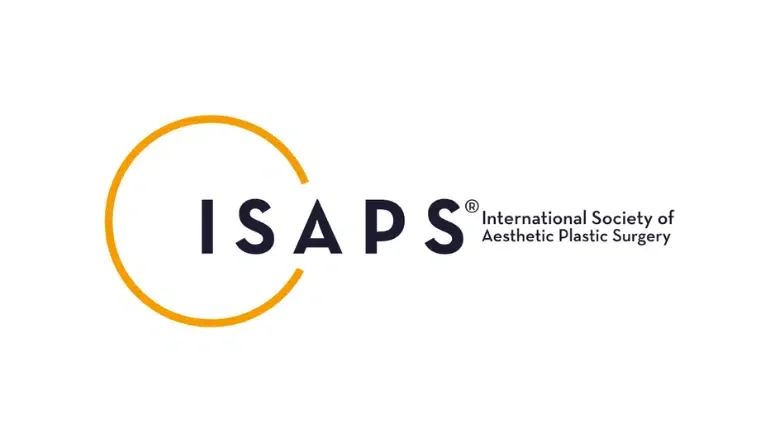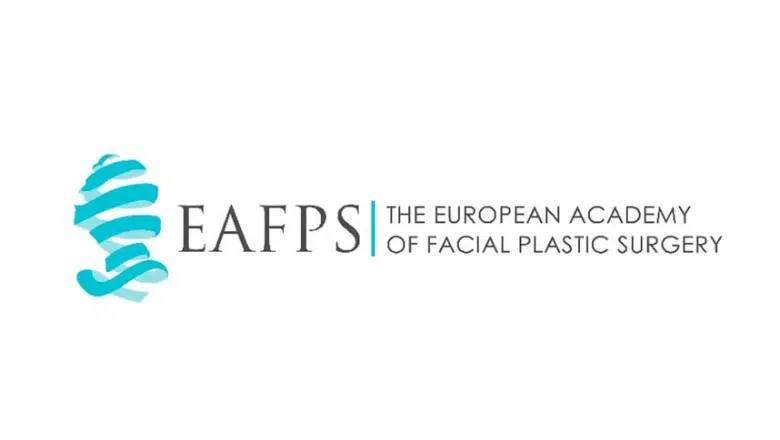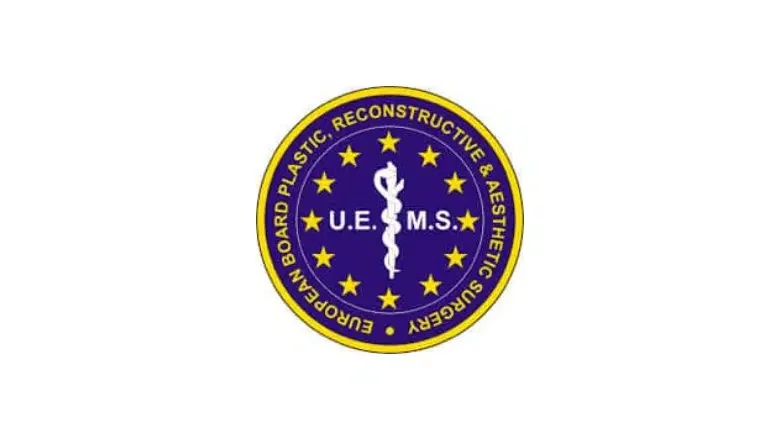Laser Wart Removal in London
Laser Wart Removal Treatment
At Centre for Surgery in London, we’re committed to offering state-of-the-art treatments, and our laser wart removal service is a prime example of this commitment. This article delves into the specifics of this innovative procedure, providing a thorough understanding for those considering treatment.
Warts, though often harmless, can be a source of discomfort and self-consciousness for many. Traditional methods of removal, such as freezing or chemical treatments, have been the norm for years. However, the introduction of laser technology in this field has revolutionised the approach to wart removal, offering a highly effective and minimally invasive option.
The laser wart removal process utilises advanced laser technology. This method involves directing concentrated light beams at the wart, which effectively breaks down the wart tissue. The precision of the laser ensures that surrounding skin is left unharmed, making it a preferred choice for warts located in visible or sensitive areas.
One of the key advantages of laser wart removal is its precision and effectiveness. The laser targets only the wart tissue, ensuring that the surrounding skin is not affected. This precision reduces the risk of scarring, a common concern with other wart removal methods. Additionally, the laser’s ability to penetrate deeply into the skin increases the likelihood of removing the entire wart, reducing the chances of recurrence.
The procedure is relatively quick and is typically performed as an outpatient service, meaning patients can return home the same day. The level of discomfort experienced during laser wart removal is generally minimal. Most patients report a sensation similar to a small pinch or rubber band snap. Local anaesthesia is usually applied to minimise any discomfort.
Aftercare is straightforward, with most patients able to resume their normal activities shortly after the procedure. The treated area may exhibit some redness or swelling, but this usually subsides within a few days. Centre for Surgery provides comprehensive aftercare instructions and support to ensure a smooth and effective healing process.
Although laser wart removal is highly effective, the suitability of the treatment varies from person to person. Factors such as the type, size, and location of the wart, the individual’s skin type, and overall health are considered when determining the best treatment approach.
At Centre for Surgery, our experienced specialists are dedicated to providing personalised care. We understand that each patient’s needs are unique, and we strive to offer tailored treatments that align with their specific requirements. Our state-of-the-art facilities and commitment to patient care make us a leading choice for those seeking laser wart removal in London.
What are Warts?
Warts are common skin growths caused by a virus known as the human papillomavirus (HPV). They are typically small, rough, and hard growths that can appear on various parts of the body. While warts are generally harmless, they can sometimes be bothersome, uncomfortable, or unsightly, leading individuals to seek treatment for removal.
HPV, the virus responsible for warts, has many different strains, each potentially leading to different types of warts. The virus causes an excess amount of keratin, a hard protein in the epidermis (the top layer of the skin), to develop. This excess keratin produces the rough, hard texture of a wart.
Warts are most commonly found on the hands and feet but can appear anywhere on the body. They can vary in appearance, depending on their location:
Common warts
Usually found on fingers, hands, knees, and elbows, they are rough, raised bumps that are often greyish-brown with a pattern of tiny black dots.
Plantar warts
Found on the soles of the feet, they can be quite uncomfortable. They grow into the skin, not out of it, because of the pressure from walking or standing, and often have a small central black dot.
Flat warts
Smaller and smoother than other types, these warts can grow in large numbers and can appear anywhere on the body. Children tend to get them on the face, men on the beard area, and women on the legs.
Filiform warts
They are fast-growing and usually appear on the face, especially around the mouth, eyes, and nose. They have a thread- or finger-like appearance.
Periungual warts
Found around or under the nails, they can affect nail growth.
Warts are contagious and can spread through direct contact with a wart or something that touched a wart. They are more likely to spread if the skin is damaged or wet. This is why warts are common in areas of shaving, such as the face or legs, and why plantar warts are often contracted in communal showers or swimming pools.
Most warts are harmless and may disappear on their own, although this can take months or even years. Some people choose to treat their warts due to discomfort, pain, or cosmetic reasons. Treatments range from over-the-counter remedies to professional treatments like cryotherapy (freezing), laser therapy, or surgical removal in the most severe cases.
Laser Wart Removal Before & After
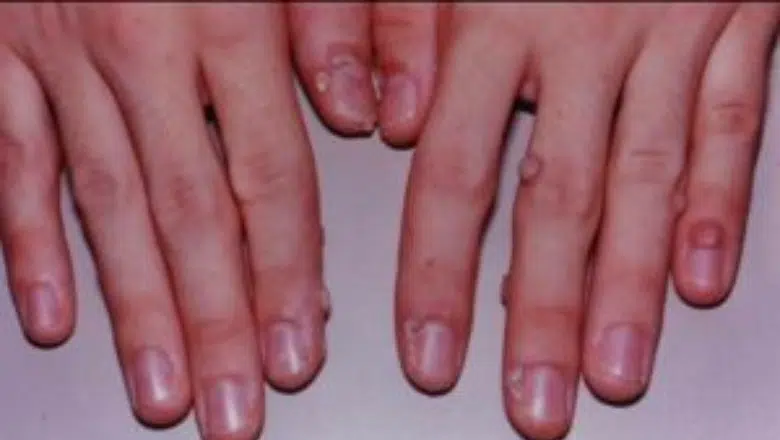
Benefits of Laser Wart Removal
Getting rid of warts just got more efficient and comfortable with the introduction of dual laser treatment, which uses two different lasers – Nd:YAG and erbium. This combo is a game-changer in the fight against stubborn warts. Let’s dive into why this approach is winning the battle.
Nd:YAG Laser
Goes Deep: The Nd:YAG laser can reach deep into your skin, making it great for those tricky warts that sit below the surface.
- Minimises Recurrence: Its deep reach means it can blast away the wart more thoroughly, lessening the chance of it making an unwanted comeback.
- Versatile Warrior: No matter your skin type or the kind of wart, the Nd:YAG laser can handle it, even the tough ones like plantar warts.
- Gentle on Delicate Spots: It’s also safe for use in those sensitive areas, making no spot out of bounds.
Erbium Laser
- Precision: The erbium laser is your go-to when it comes to targeting just the top layers of the wart without hurting the surrounding skin.
- Speedy Recovery: Since it focuses on the surface, you can expect to bounce back quicker.
- Less Pin: Treatment is generally more bearable, with less discomfort during and after.
- Better Cosmetic Results: This laser is also about keeping things looking good, aiming for minimal scarring or skin colour changes.
Dual Laser Treatment: The Best of Both Worlds
Mixing the Nd:YAG and erbium lasers means you get a comprehensive treatment that hits the wart from all angles – both deep down and on the surface.
- Tailor-Made Approach: Depending on your wart’s size and location, this method can be customised just for you, ensuring the best treatment possible.
- Boosts Success Rates: Attacking the wart from two fronts increases the chance of saying goodbye to it for good.
- Lower Side Effect Risk: Using the best laser for each job means less chance of running into issues like scarring or infections later on.
Traditional Wart Removal Methods
Several conventional treatments have been employed, each with varying degrees of effectiveness:
-
Topical Agents (Salicylic Acid and/or Lactic Acid):
- These are applied directly to the wart to peel away the infected skin gradually.
- They require consistent application and may take weeks to months to be effective.
-
Cryosurgery:
- This involves freezing the wart with liquid nitrogen.
- The extreme cold destroys the wart tissue, which then falls off as the skin heals.
-
Electrocautery:
- This technique uses heat generated by electric current to burn off the wart.
- It can be effective but may cause discomfort and has a risk of scarring.
-
Surgical Excision:
- The wart is physically cut out of the skin.
- This method is more invasive and may lead to scarring.
-
Immunotherapy:
- This involves stimulating the body’s immune system to fight off the wart virus.
- It’s a less common approach and may be used for resistant warts.
Challenges with Traditional Treatments
One major issue with many traditional treatments is their inability to completely clear warts, leaving residual tissue and a high risk of recurrence. Also, some treatments neglect the use of adequate anaesthesia, leading to pain and incomplete treatment. Local anaesthetic injections, ideally administered by a doctor, are crucial for treating deeper wart layers effectively.
Periungual Warts: A Special Challenge
Periungual warts, located around the nails, are particularly tricky to treat due to their adherence to the skin above and below the nail fold. Traditional methods often fail to fully clear these warts without affecting future nail growth, leading to temporary or sometimes permanent nail deformities. Additionally, wart growth can cause nail deformity even before treatment begins.
Laser Techniques: The Gold Standard for Periungual Warts
Laser techniques have emerged as the superior treatment option for periungual warts, offering significant advantages over surgical removal:
- Precision: Lasers can target the wart tissue accurately without damaging the surrounding nail bed.
- Minimal Invasiveness: Unlike surgical excision, laser treatment is less invasive, reducing the risk of nail deformity.
- Effectiveness: Lasers are capable of treating the deeper layers of warts, increasing the likelihood of complete removal and reducing recurrence rates.
Wart Removal Procedure
At Centre for Surgery, our team of wart removal specialists has honed significant expertise in both conventional surgical techniques and advanced laser wart removal. Our proficiency in these areas, combined with access to top-tier laser technology, positions us as a leading provider of efficient and effective wart removal services.
Our clinic proudly utilises a dual-wavelength laser treatment featuring the Fotona SP Dynamis system, renowned for its effectiveness in wart removal. This state-of-the-art technology, not widely available in many clinics, enables us to offer a superior treatment experience with a high success rate.
The Dual-Laser Procedure: Erbium YAG and Nd:YAG Lasers
Our approach integrates two distinct laser technologies for comprehensive wart treatment:
Step 1 – Wart Ablation with Erbium YAG Laser:
-
- This initial phase involves the precise application of the Erbium YAG laser to the wart.
- The cold ablation technique ensures minimal residual thermal damage.
- The laser carefully peels away the wart layer by layer, reaching down to its deeper components.
Step 2 – Wart Coagulation with Nd:YAG Laser:
-
- Following the ablation, the Nd:YAG laser targets the blood vessels feeding the wart, effectively coagulating them.
- This step not only treats the wart but also significantly reduces the likelihood of recurrence.
- The long-pulsed Nd:YAG laser is known for its safety and higher clearance rates compared to other common therapies.
Treatment Protocol and Efficacy
The treatment area is meticulously prepared, ensuring optimal safety and comfort:
- The area is thoroughly disinfected.
- Local anaesthesia is administered for pain relief, with cold air cooling for added comfort.
- After allowing the anaesthetic to take effect, the dual-laser treatment is performed.
We’ve often observed that many common warts are cleared after just one or two sessions. More complex warts, like plantar mosaic and periungual warts, often require multiple sessions and may not be cleared fully.
Safety and Recovery
The dual laser method is not only effective but also prioritises patient safety:
- Nd:YAG coagulation minimises the risk of bleeding post-treatment.
- The chances of infection or scarring at the treatment site are exceptionally low.
- While post-inflammatory hyperpigmentation is a rare risk, it is slightly higher in darker skin types.
Wart Removal Near Me: Discover the Excellence of Centre for Surgery
At Centre for Surgery, we specialise in providing state-of-the-art wart removal treatments in the field of dermatological care. Our clinic, located conveniently in the heart of London, offers a unique blend of advanced technology, expert care, and a patient-centred approach.
Cutting-Edge Technology
We utilise the latest dual-wavelength laser treatment using the Fotona SP Dynamis system, ensuring high precision and effectiveness.
Expert Medical Team
Our specialists are renowned for their expertise in both traditional and laser wart removal techniques.
High Success Rates
With success rates of 70-80%, our treatments exceed the industry standard, offering you the best chance for a wart-free life.
Personalised Care
Each treatment is tailored to meet the individual needs and concerns of our patients.
Comprehensive Aftercare
We believe in supporting our patients through every step of their journey, ensuring a smooth and comfortable recovery.
Patient Testimonials
“After struggling with a painful plantar wart, I turned to Centre for Surgery. The treatment was quick, and the staff were incredibly supportive. I’m now completely wart-free!” – Emma H.
“I had periungual warts that made me self-conscious. The dual-laser treatment at Centre for Surgery was a game-changer. Professional staff and excellent results.” – Michael T.
“The wart on my hand was stubborn, but the specialists at Centre for Surgery handled it with such expertise. Highly recommend their advanced laser treatments!” – Sarah K.
Book Your Consultation Today
Don’t let warts affect your confidence and comfort. Contact us to schedule a consultation and take the first step towards effective wart removal.
📞 Phone: 0207 993 4849
📧 Email: contact@centreforsurgery.com
📍 Address: 95-97 Baker Street, London W1U 6RN
Explore More About Us and Our Services
For more detailed information about our clinic and services, please visit our pages:
- About Us: Centre for Surgery – About Us
- Finance Options: 0% APR with Chrysalis Finance
- Plastic Surgery Blog: Informative Articles and Insights
- Clinic FAQs: Your Questions Answered
- Baker Street Clinic: Our Prime Location
Choose Centre for Surgery for a professional, caring, and effective wart removal experience. We’re here to help you achieve the best possible results with our advanced treatments and dedicated care.
FAQs
-
What is a wart?A wart is a small raised skin lesion caused by human papilloma virus that often has a roughened surface and can be found anywhere on the skin surface. They may be flattened in appearance or have an appearance resembling a cauliflower or filiform appearance. Warts are effectively treated with Erbium laser often in combination with Nd:YAG laser for optimal clearance.
-
How Common are Warts?Warts are benign skin growths resulting from human papillomavirus (HPV) infection. They are a common skin complaint, with an estimated incidence of 10% in children and young adults. Even if disease progression is naturally self-limited, warts can persist, and treatment may be necessary. Several treatment methods are available for warts; however, most methods have specific disadvantages and side effects. Invasive surgery has the drawbacks of pain and long recovery periods. The alternative non-invasive option of topical application of drugs can be for long durations, and treatment success is, therefore, highly dependent on patient compliance. Wart removal is not usually performed in the NHS as it is a cosmetic problem.
Warts are a remarkably common condition in men and women of all ages. A verruca is a type of wart which occurs on the sole. Warts are harmless growths but can often be a nuisance when they rub against clothing, and they may appear in visible parts of the body. This can result in a lack of self-confidence or even embarrassment. At Centre for Surgery in London, the treatment for warts and verrucae is simple, effective and quick. Clear, healthy skin is restored, and confidence is regained.
Warts differ from skin tags but will have a rougher surface. Warts are often more solidly attached to the skin instead of hanging off like a skin tag. Warts are potentially contagious and can be spread across other areas of the body and between people. Public swimming baths are a very common method for the transmission of warts.


